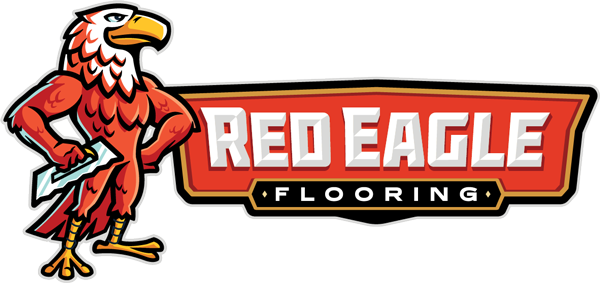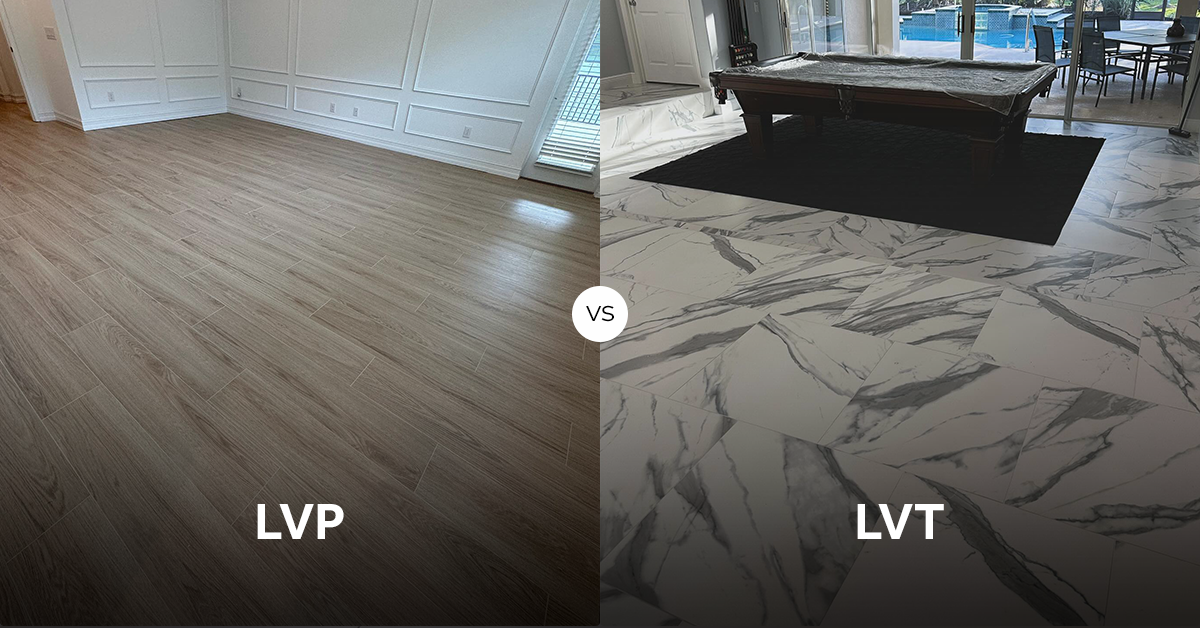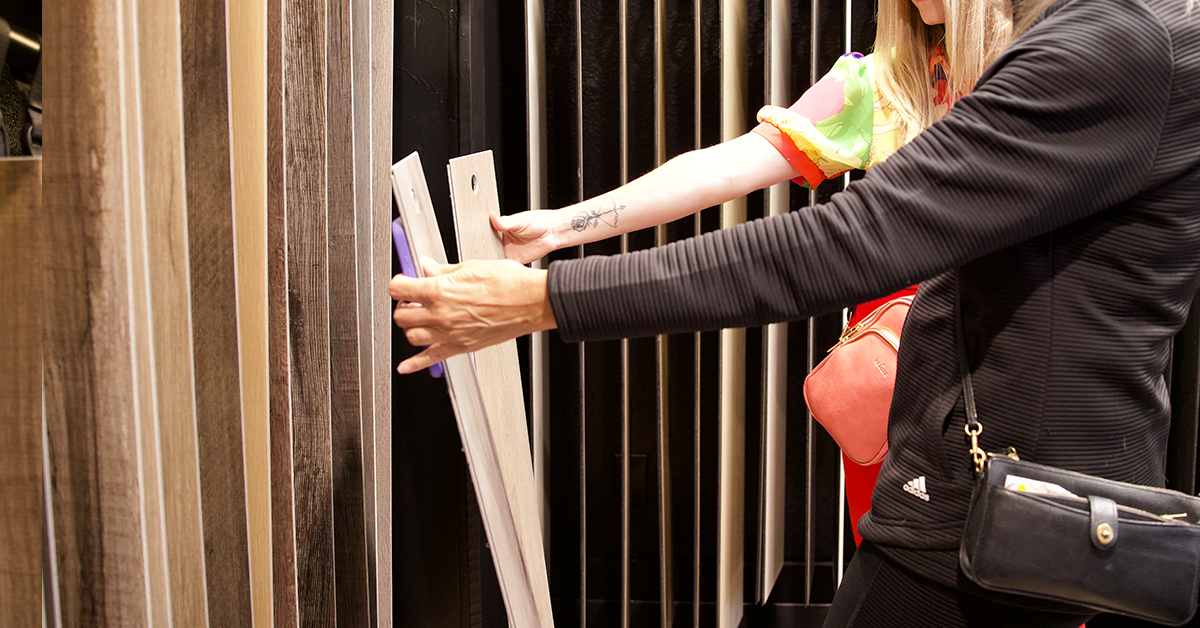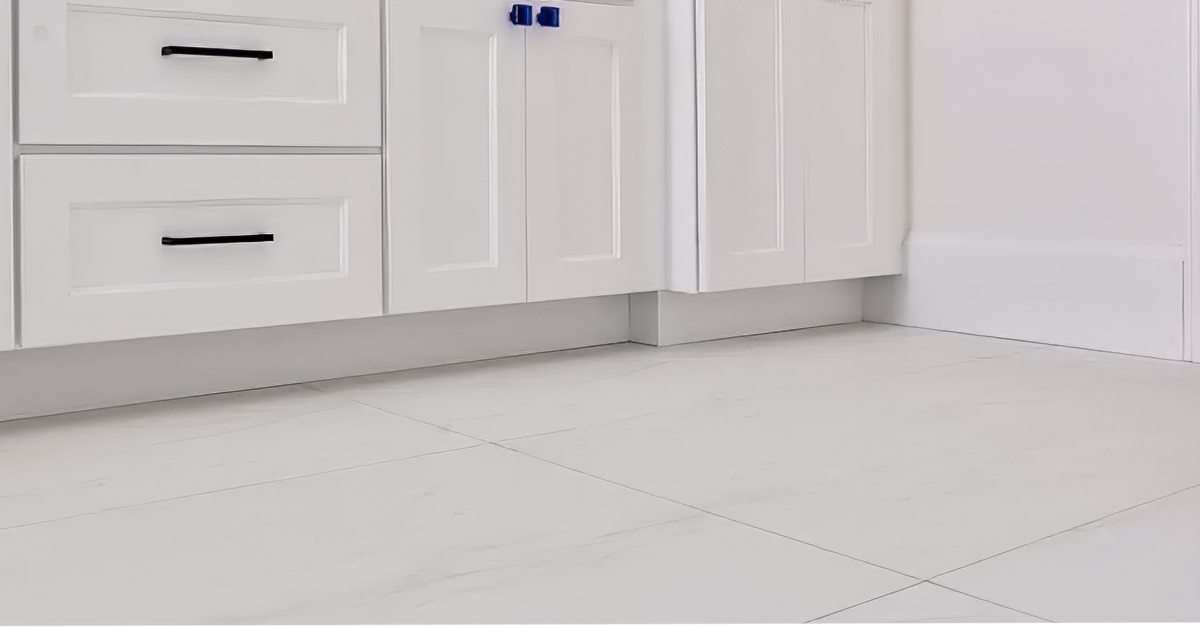When it comes to picking new floors, the LVP vs. LVT question often arises, demanding a balance of aesthetics, durability, and practicality. Among the most popular and versatile options in modern flooring are Luxury Vinyl Plank (LVP) and Luxury Vinyl Tile (LVT).
Both offer incredible resilience and stunning visual appeal, mimicking natural materials like wood and stone. But what exactly sets them apart, and and which one is the best fit for your specific needs?
That’s what we’re gonna explain to you in this content, to help you make an informed decision for your living space.
What is LVP (Luxury Vinyl Plank)?
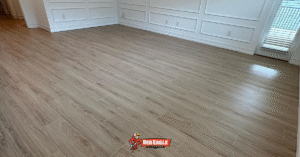
LVP — or Luxury Vinyl Plank — is a premium vinyl flooring product designed to replicate the authentic look and feel of hardwood. It comes in long, narrow strips, just like traditional wood planks, and features highly realistic wood grain patterns and textures.
Thanks to advanced photographic and embossing technologies, LVP can convincingly mimic a wide array of wood species, from classic oak to exotic walnut, providing the beauty of wood without its common drawbacks.
Key Characteristics of LVP:
- Wood Aesthetic: expertly crafted to mirror the natural beauty and warmth of various wood species.
- Plank Format: available in elongated planks, similar to conventional hardwood boards.
- Layered Construction: typically built with multiple layers, including a durable backing, a high-definition printed design layer, a robust transparent wear layer, and a protective UV coating.
- Installation Versatility: can be installed using several methods, such as floating (with a click-lock system), glue-down, or with pressure-sensitive adhesive, offering flexibility for different subfloor conditions.
What is LVT (Luxury Vinyl Tile)?
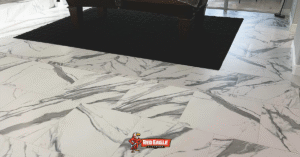
LVT — or Luxury Vinyl Tile — is the tile-shaped counterpart to LVP, engineered to emulate the sophisticated appearance of natural stone, ceramic, or porcelain tiles.
It is available in square or rectangular tile formats, allowing for intricate patterns and designs that can replicate the elegance of marble, the ruggedness of slate, or the contemporary feel of concrete. LVT provides the luxurious look of these materials combined with the practical benefits of vinyl.
Key Characteristics of LVT:
- Stone/Ceramic Aesthetic: designed to capture the intricate details and textures of natural stone, ceramic, or porcelain.
- Tile Format: offered in various tile sizes and shapes, resembling traditional stone or ceramic tiles.
- Layered Construction: similar to LVP, it features a multi-layered build for enhanced durability and stability.
- Installation Versatility: like LVP, it can be installed as a floating floor, glued down, or using pressure-sensitive adhesive, adapting to diverse project requirements.
LVP vs. LVT: Which one is the best option?
While LVP and LVT share a core composition and many great advantages, their primary distinction lies in their visual presentation and format. Both are excellent choices for various environments due to their impressive durability and moisture resistance. Let’s explore a detailed comparison:
Appearance and Style
- LVP: The go-to option for those who desire the timeless and inviting appeal of wood. It seamlessly integrates into living rooms, bedrooms, and hallways, creating a cohesive and expansive feel.
- LVT: The ideal selection for achieving the refined elegance of stone or ceramic. It excels in areas like kitchens, bathrooms, laundry rooms, and high-traffic commercial spaces, where water resistance and effortless cleaning are paramount.
Ultimately, the aesthetic choice comes down to your preference in the LVP vs. LVT visual comparison.
Durability and Resistance
When it comes to durability, the LVP vs. LVT comparison shows both are tough performers. They can really stand up to everyday life – things like scratches, dents, and stains. What makes them so durable? It’s all thanks to their wear layer, that clear top coating. A thicker wear layer usually means your floor will handle daily foot traffic and scuffs much better, lasting longer.
Water Resistance
Both sides of the LVP vs. LVT equation excel in water resistance. Here’s a big plus: LVP and LVT are super water-resistant, and many new options are even 100% waterproof! That makes them perfect for places that get wet, guarding against spills, pet messes, and humidity. No more worrying about swelling, warping, or mold – which is a huge bonus in humid spots like Florida.
Comfort
For comfort underfoot, the LVP vs. LVT choice offers similar benefits. You’ll also find LVP and LVT feel pretty comfy underfoot. They’re softer and warmer than regular ceramic or stone tiles. So, it’s a nicer surface if you’re standing a lot, or for kids and pets to play on.
Installation
The installation process for LVP and LVT is relatively easy, making them suitable for professional installers and, in some cases, DIY fans with some experience. The click-lock (floating) systems are particularly popular due to their adhesive-free nature, allowing for quick and clean installations. For busier spots like homes with lots of foot traffic or businesses, glue-down methods offer extra stability.
Cost
When comparing LVP vs. LVT costs, both offer excellent value. Prices can change depending on the brand, how thick the wear layer is, how complex the design is, and how it’s installed.
But here’s the best part: both options give you amazing value. You get that upscale look of pricier materials, but at a much lower cost – making luxury flooring achievable for more people.
Why Choose Vinyl Flooring?
Vinyl flooring offers a compelling combination of benefits that make it an increasingly popular choice for homeowners:
- Versatile Design: The vast array of styles, patterns, and colors ensures there’s a luxury vinyl option to complement any interior design, from contemporary minimalist to rustic farmhouse.
- Low Maintenance: Their non-porous surfaces make them incredibly easy to clean and maintain, requiring only regular sweeping and occasional damp mopping.
- Long-Lasting: With proper care, LVP and LVT can maintain their beauty and performance for many years, even in busy households.
- Healthier Home: Their water-resistant properties help prevent the growth of mold and mildew, contributing to better indoor air quality.
Both of these vinyl options are a fantastic choice for your home. They’re tough, water-resistant, and look great! Picking between them really comes down to your personal style and what your space needs.
Let’s Get Your Flooring Right from the Start
With Red Eagle Flooring, you can rest easy knowing you’re getting top-notch products and expert installation. We’ll make sure your new floors don’t just look amazing, but also hold up beautifully for years.
📞 Call 33-RED-EAGLE or click here to request your free estimate today.
📱 Also follow us on Instagram @redeagleflooring
Red Eagle Flooring — where quality takes flight
